Thursday, August 10, 2006
August 2006 - Summer Ales
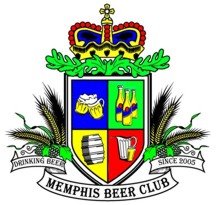 This month we will trying an assorment of Summer Brews that range from a couple of American Wheat Beers, A Premium Lager, Golden/Blond ale and a Belgium Ale. Once again we will be sampleing a beers from the Boston Brewery Company, Anchor Brewery in San Fransico, Sierra Neveda in Chico California, Pete’s Wicked in Utica and New Beligum in Ft. Collions Colorado.
This month we will trying an assorment of Summer Brews that range from a couple of American Wheat Beers, A Premium Lager, Golden/Blond ale and a Belgium Ale. Once again we will be sampleing a beers from the Boston Brewery Company, Anchor Brewery in San Fransico, Sierra Neveda in Chico California, Pete’s Wicked in Utica and New Beligum in Ft. Collions Colorado.Summer ale is a category of extremely pale, golden-blonde ale, generally designed to be served cooler than "normal" ale. It is usually accepted that the style was invented in 1989 by John Gilbert, a former brewer at Watney in Mortlake, London, who had opened his own operation, the Hop Back Brewery, in Salisbury, England. His aim was to develop an ale that could be as refreshing as lager, which was quickly gaining popularity at that time. The result was a drier and hoppier pale ale he called "Summer Lightning", after a novel by PG Wodehouse; it won several awards and inspired numerous imitators.
A Summer ale may contain spices such as lemon peel or coriander, but only lightly and not to the extent of a spiced beer. British examples of the style are often made with American hops, which give a pronounced citrus flavour and aroma. Each of the beers we are going to be sampleing have a little different approach to their beers. This should be a great nite of refreashing beers that will show a wide range of flavor.

The first beer of the night is Anchor Summer Beer, an American Wheat, brewed by the Anchor Brewery of San Franciso, California. Anchor Summer is an all-malt beer, and over 50% of its malt comes from malted wheat. It is fermented with traditional top-fermenting "ale" yeast. This style best celebrates the refreshingly light flavor of malted wheat. You may notice that the head on this beer is unusually abundant, with a consistency similar to whipped egg whites. This is due to protein contributed by the wheat. Wheat malt contributes to an unusual lightness and dryness to the palate, and this—combined with the distinctive flavor of the wheat—makes for a perfect thirst-quenching beverage. It is the ideal drink for beer lovers who appreciate tradition and character in their beer, but also seek a lighter, refreshing style, perfect for warm weather.
The brewery was founded in 1896, and was purchased by its current owner, Frederick Louis Maytag III, in 1965. It moved to its current location in 1979. It is one of the last remaining breweries to produce California Common beer, also known as Steam Beer, a trademark owned by the company. Anchor Brewery is largely responsible for the growth of the microbrewery movement in the United States. After Prohibition ended in the U.S., many small, locally-operated breweries were able to re-open and recommence brewing (although many more, perhaps most, were not). The vast majority of these concerns served only the immediate vicinty of their sole plant, a radius of a few miles to perhaps 100 or so. Local breweries and beers were the source of local pride in many communities, especially those with large populations of German, Polish, or Czech extraction. Many of these thrived on through World War II and into the 1950s.

Most did not survive the 1950s, however, due to the influence of television advertising and the mass marketing tactics of major national breweries such as Anheuser-Busch, Schlitz, Pabst, and Miller. The whole idea of such beers and breweries was largely forgotten in the U.S. Maytag desired to establish such a small-scale brewery, with small-town quality and taste being the hallmarks of his beer. He was already a fan of Anchor Steam Beer when he learned that the brewery was about to close. In 1965, Maytag purchased 51 percent of the brewery for a few thousand dollars, and later purchased brewery outright.
Things began to change in the 1980s when Maytag's signature brew, Anchor Steam Beer, began to achieve national notice. Demand skyrocketed from only a few thousand cases a year that he had been making in the old tradition. His success prompted many imitators, which he welcomed, since he could not have produced Anchor Steam in the mass quantities of Budweiser or similar mass-marketed brands and made a product with which he and his consumers would have been satisifed.
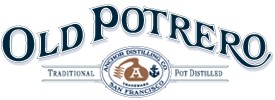 In 1993, the company opened Anchor Distillery in the same location as the brewery, and began making a single malt rye whiskey, named Old Potrero after the hill. In 1997 the distillery began producing gin, called Junípero - Spanish for juniper, and an oblique reference to Junípero Serra, an important figure in California's history.
In 1993, the company opened Anchor Distillery in the same location as the brewery, and began making a single malt rye whiskey, named Old Potrero after the hill. In 1997 the distillery began producing gin, called Junípero - Spanish for juniper, and an oblique reference to Junípero Serra, an important figure in California's history. Next we will be sampleing the Sierra Nevada Summerfest, brewed by the Sierra Nevada Brewery in Chico, California. Summerfest is a refreshing, pilsner-style lager. Its incredible smoothness comes from an extra-long lagering period. Lighter in body than our ales but just as complex in character, Summerfest quenches your thirst with big aroma and a tangy hop bite. GOLD MEDAL WINNER California State Fair
Next we will be sampleing the Sierra Nevada Summerfest, brewed by the Sierra Nevada Brewery in Chico, California. Summerfest is a refreshing, pilsner-style lager. Its incredible smoothness comes from an extra-long lagering period. Lighter in body than our ales but just as complex in character, Summerfest quenches your thirst with big aroma and a tangy hop bite. GOLD MEDAL WINNER California State Fair 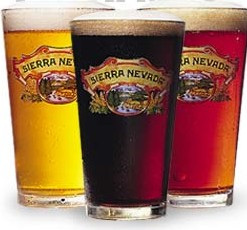
In 1989, after moving the brewery to its current location, they added The Sierra Nevada Taproom and Restaurant, which serves lunch and dinner. More recently the brewery opened "The Big Room", a live music venue located inside the brewery's facilities, and featuring world-class acts from country, bluegrass, folk, rock, blues and other musical genres. The facility is to be entirely fuel cell powered by 2007.
Sierra Nevada Brewing Company is the second best-selling craft beer brand in the United States, behind the Boston Beer Company, makers of Samuel Adams. Sierra Nevada has sponsored a professional bicycle racing team since 2001, now co-sponsored by Kodak EasyShare Gallery.
The key ingredient to a good summer is a GREAT brew! Born to play, Pete's Wicked Rally Cap Ale is crafted with a special blend of pale and wheat malts, Mt. Hood hops and a smack of natural lemon. Get in the game... Get Wicked!
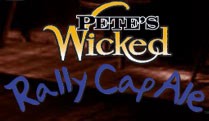 Pete's Brewing Company was founded by homebrewer Pete Slosberg in 1986. Its major product line is Pete's Wicked Ale, an America Brown Ale that is 5.3% alcohol by volume. The company was acquired by The Gambrinus Company in 1998, a corporation that primarily imports beers such as Corona from Mexico and Moosehead from Canada. In 2004, Pete's Brewing Company was number 42 in America for sales by volume.
Pete's Brewing Company was founded by homebrewer Pete Slosberg in 1986. Its major product line is Pete's Wicked Ale, an America Brown Ale that is 5.3% alcohol by volume. The company was acquired by The Gambrinus Company in 1998, a corporation that primarily imports beers such as Corona from Mexico and Moosehead from Canada. In 2004, Pete's Brewing Company was number 42 in America for sales by volume.The entire product line is brewed under contract by Matt Brewing Company in Utica, New York. Now a little history about the Rally Cap. The Rally Cap is the act of turning a baseball cap inside out while trying to will your team into a rally late in the game. The Rally Cap is a superstition used in baseball. Players usually only do this at a young age, while fans do it at an older age while attending Major League Baseball games.
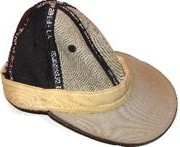 The possible start for the belief in the Rally cap may have been during the 1986 World Series when the New York Mets were playing the Boston Red Sox. The Mets were losing Game Six and already down 3 games to 2 in the series; it seemed almost certain that the Red Sox were going to be the 1986 World Series Champs. In the 7th Inning of that game, something amazing happened; the Mets all started wearing their caps inside out while sitting in the dugout. Catching on, the fans also started to sport their caps inside out and called it the "Rally Cap". After that, the Mets rallied back and went on to win Game Six in the Tenth Inning-forcing a Game Seven. Then, in Game Seven, the Mets found themselves falling behind again by a score of 3-0 and in need of a little more magic. Once again, the players and the fans put on their Rally Cap. The rest is Baseball History; the Mets rallied back to win Game Seven by a score of 8-5 and became the 1986 World Series Champs.
The possible start for the belief in the Rally cap may have been during the 1986 World Series when the New York Mets were playing the Boston Red Sox. The Mets were losing Game Six and already down 3 games to 2 in the series; it seemed almost certain that the Red Sox were going to be the 1986 World Series Champs. In the 7th Inning of that game, something amazing happened; the Mets all started wearing their caps inside out while sitting in the dugout. Catching on, the fans also started to sport their caps inside out and called it the "Rally Cap". After that, the Mets rallied back and went on to win Game Six in the Tenth Inning-forcing a Game Seven. Then, in Game Seven, the Mets found themselves falling behind again by a score of 3-0 and in need of a little more magic. Once again, the players and the fans put on their Rally Cap. The rest is Baseball History; the Mets rallied back to win Game Seven by a score of 8-5 and became the 1986 World Series Champs.
One of my faviorate beers from one of the best Breweries in the country, Sam Adams Summer Ale. Samuel Adams Summer Ale is an American wheat ale. This summer seasonal uses malted wheat as well as lemon zest and grains of paradise, a rare pepper from Africa first used as a brewing spice in the 13th Century to create a crisp and spicy flavor and body. The ale fermentation imparts a background tropical fruit note reminiscent of mangos and peaches. All of these come together to create a quenching, clean finishing beer perfect for those warm Summer days.
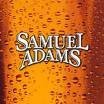 As of 2006, the company produces ten varieties of beer year-round: Boston Lager, Sam Adams Light, Boston Ale, Pale Ale, Cherry Wheat, Cream Stout, Brown Ale, Hefeweizen, Scotch Ale, Black Lager, and Utopias (that in 2003 had a batch with 25.6% APV, beating the records that Samuel Adams Triple Bock and Samuel Adams Millennium had set before it). Additionally, the company brews five seasonal beers per year, as follows:
As of 2006, the company produces ten varieties of beer year-round: Boston Lager, Sam Adams Light, Boston Ale, Pale Ale, Cherry Wheat, Cream Stout, Brown Ale, Hefeweizen, Scotch Ale, Black Lager, and Utopias (that in 2003 had a batch with 25.6% APV, beating the records that Samuel Adams Triple Bock and Samuel Adams Millennium had set before it). Additionally, the company brews five seasonal beers per year, as follows:
- Double Bock (January - March)
- White Ale (January - March)
- Summer Ale (April - August)
- Octoberfest (August - October)
- Winter Lager (October - February)
Samuel Adams also runs a "Winter Classics Mix Pack" near the Christmas Season, including Old Fezziwig Ale, a spiced ale introduced in 1995, Holiday porter, which is very dark but smooth, introduced in 2004, and Cranberry Lambic, which is redolent of its eponymous fruit.
New Belgium’s Skinny Dip is a full-bodied, figure-friendly beer perfect for the 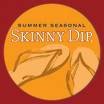 lightly attired summer months. Cascade hops frolic with kaffir lime and ample malt to create a bright, citrusy nose that’s as crisp as chilling in a mountain pond. Skinny Dip * a most revealing beverage.
lightly attired summer months. Cascade hops frolic with kaffir lime and ample malt to create a bright, citrusy nose that’s as crisp as chilling in a mountain pond. Skinny Dip * a most revealing beverage.
The term Skinny Deep is commonly used with a neutral tone to describe swimming in unheated water, but is also used when referring to going naked in hot tubs and hot springs.
It has a more mischievous connotation when describing swimming excursions (often under cover of darkness) in swimming pools or at beaches where one would be expected to wear swimsuits. In this sense, skinny dipping in mixed company (i.e. both males and females) has an element of sexual rebelliousness to it, though sexual activity does not necessarily take place.
Skinny dipping was once very common in the western world too, especially for young boys and girls swimming in a secluded pond, swimming hole, or section of a river. Swimsuits were originally uncommon in these settings, as they were made out of materials such as wool that required extra care to deal with, and were of limited practical benefit. Although modern swimwear is more practical, skinny dipping remains a fairly common activity in rural areas, where an unwanted audience of outsiders is rather unlikely; yet it may be forbidden even there by law and/or parental authority if considered immoral.